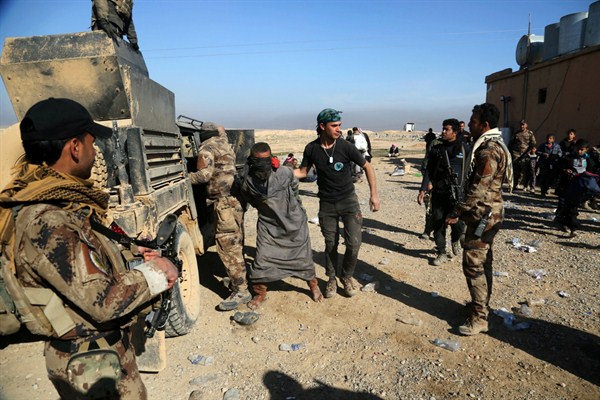As most security experts expected, driving the self-styled Islamic State out of its “caliphate” in northern Iraq and eastern Syria has been tough, bloody work. Nevertheless, the Iraqi military and local militias, backed by U.S. airpower, special operations forces and military advisers, are making progress. Eventually the international coalition will, as Hal Brands and Peter Feaver write in Foreign Affairs, militarily defeat the Islamic State “by destroying its core in Syria.”
Unfortunately, though, this will not kill the group—its ideology cannot be destroyed on the battlefield—but simply drive it to other locations. As FBI Director James Comey said, “At some point there is going to be a terrorist diaspora. Not all of the Islamic State killers are going to die on the battlefield.” Like cancer in a weakened body, the Islamic State malignancy is migrating to parts of the world less prepared to confront it.
To spread beyond Iraq and Syria, the group usually piggybacks on grievance-based conflicts involving Muslims, often associating with a local terrorist group or insurgency or operating in parallel using its well-deserved reputation for ferocity to compete for the most radical jihadist recruits. In Afghanistan, for instance, the Islamic State has tried to worm its way into the Taliban’s fight against the Western-backed national unity government. The Taliban’s strength, as well as the Islamic State’s position as an outsider not fully part of Afghanistan’s intricate web of loyalties and allegiances, have so far limited its progress. But it is likely to continue trying. By providing potential fighters a more extreme option than the Taliban, it may prevent Taliban leaders from seriously considering a negotiated settlement of Afghanistan’s long war, at least so long as the United States continues to support the national government.

